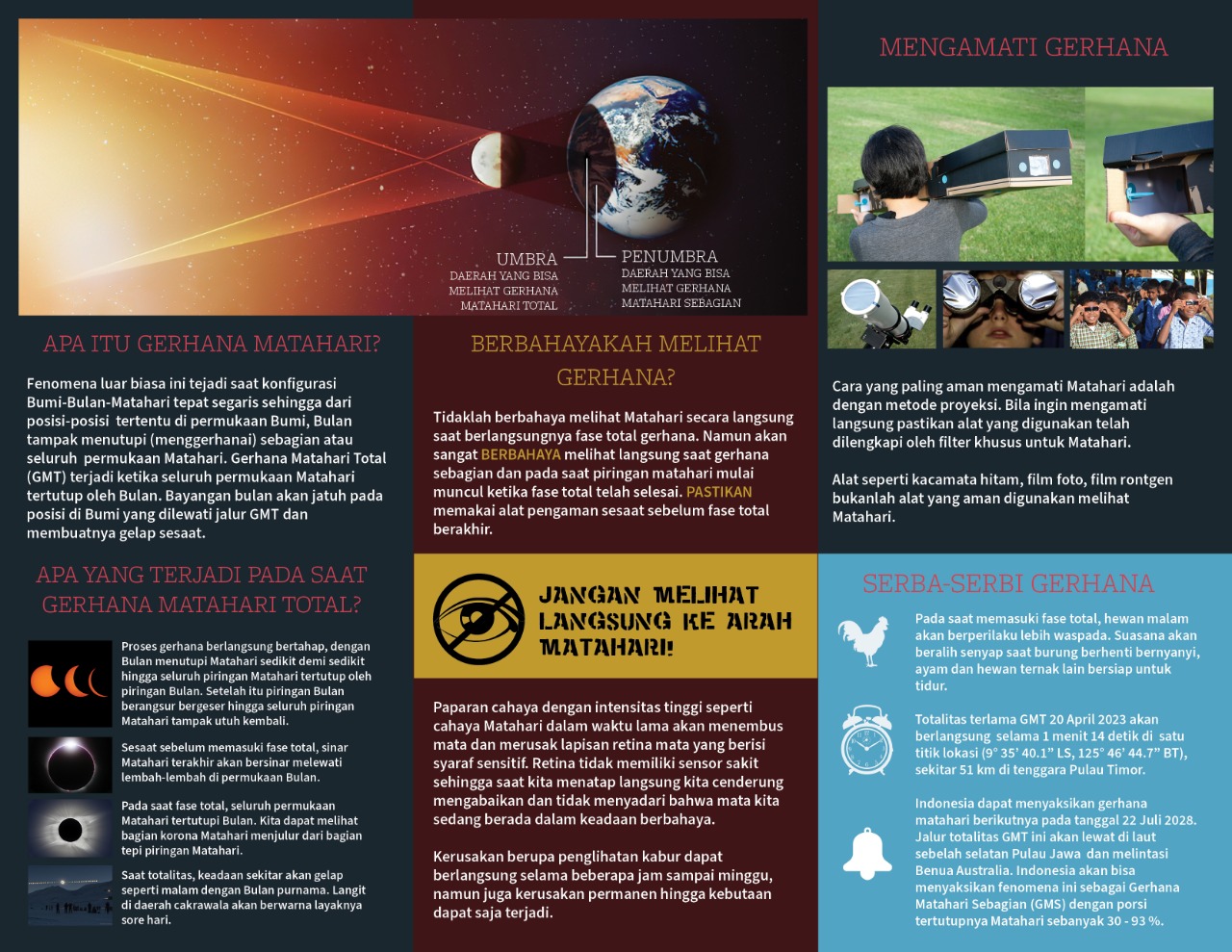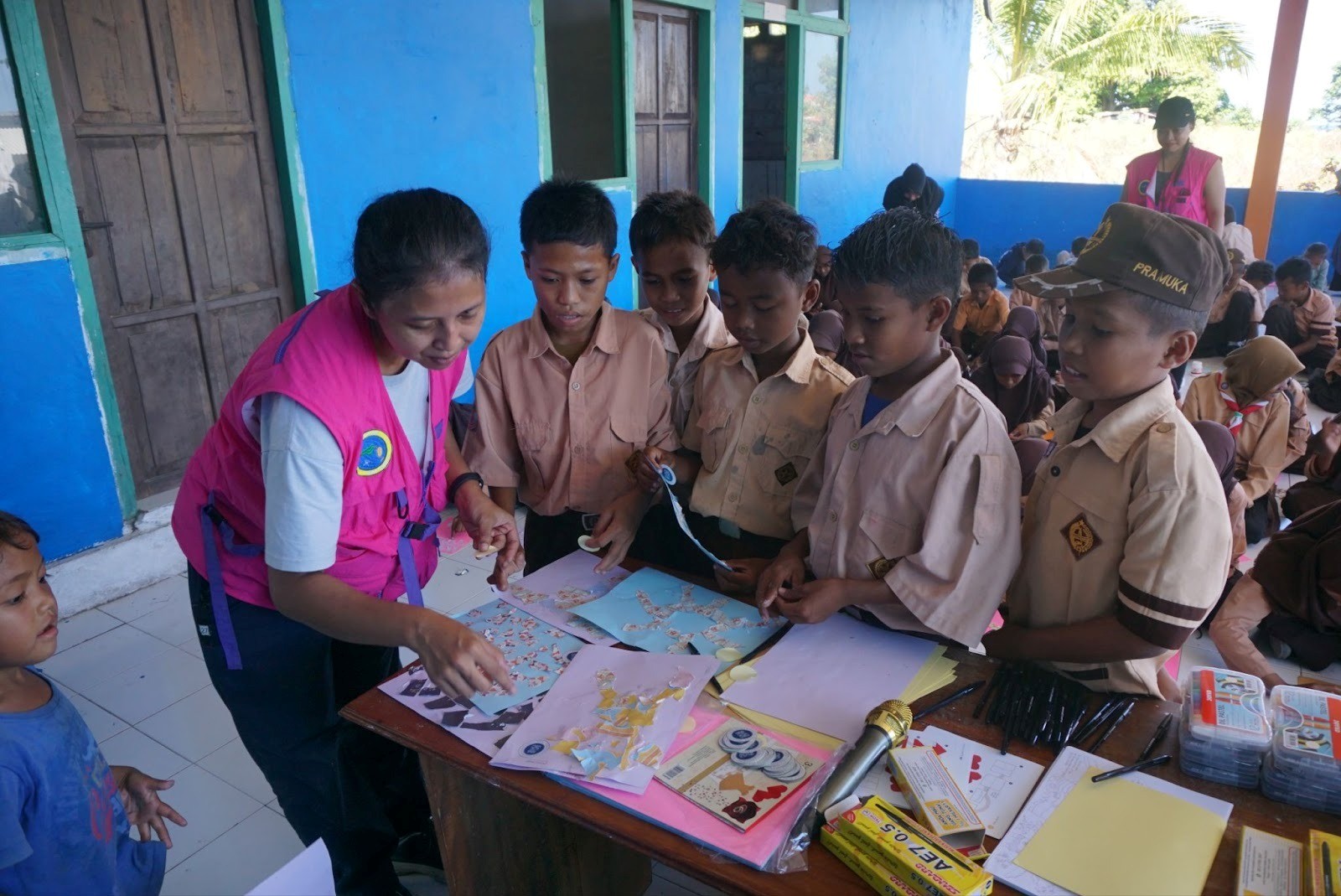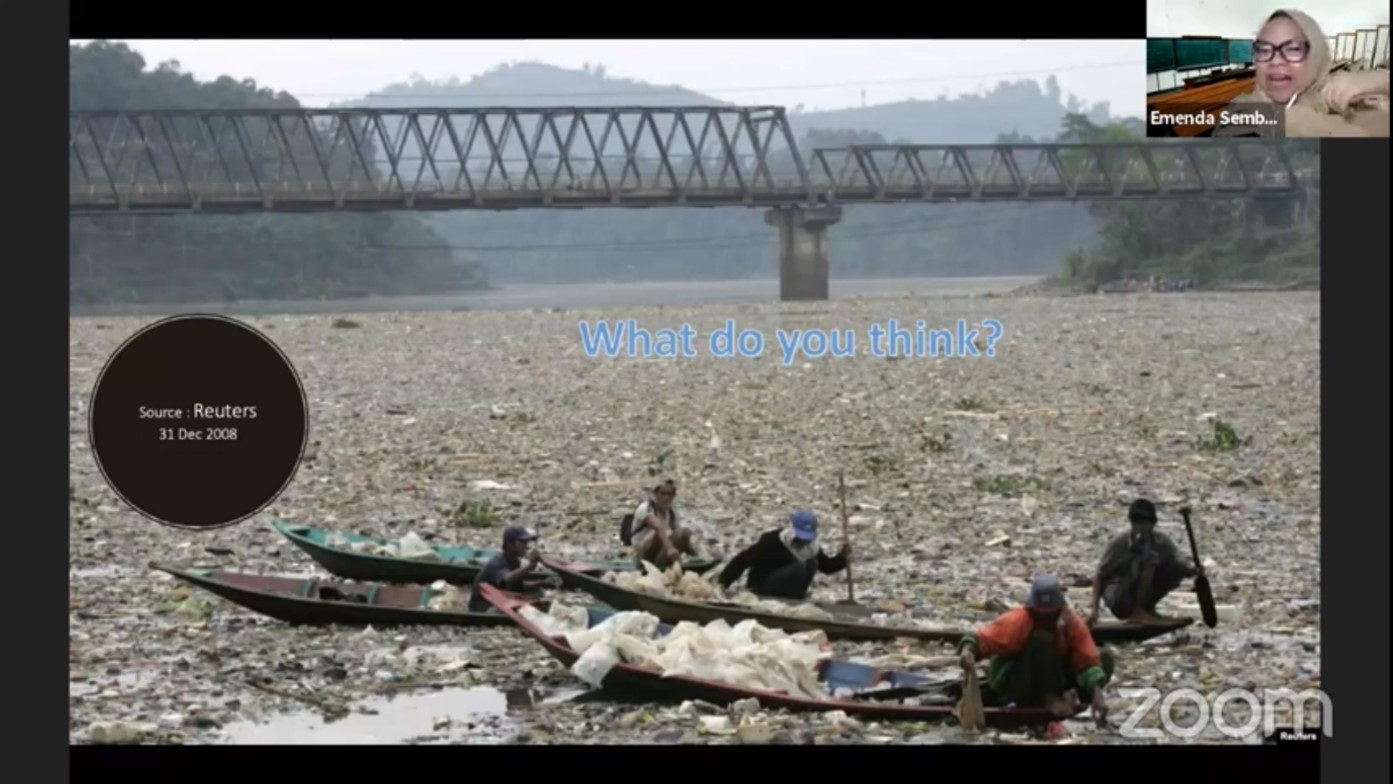Celebrating Indonesia's Modern Astronomy with the 2023 Total Solar Eclipse
By Adi Permana
Editor Adi Permana

BANDUNG, itb.ac.id – Inaugurated on 1 January 1923, the ITB Bosscha Observatory was the first modern astronomical observatory in Southeast Asia. Thus, it was a pleasant coincidence for its centenary to be celebrated during the total solar eclipse event on 20 April 2023.
A solar eclipse occurs when the moon's position is in line with the Earth and the sun, resulting in the sun viewed from Earth appearing totally or partially obscured. The moon's shadow will be cast on Earth according to its trajectory, causing certain parts of the world to be enshrouded in momentary darkness.
With the slow, steady orbit of the moon, the sun is gradually covered until it is completely blocked. The sun's corona, however, are still visible; they are seen sticking out from the edges of the moon like a ring. After the annularity passes, the moon will shift away from the alignment and the sun reappears as a whole.
During the totality phase, the intensity of sunlight is reduced and creates night-like darkness. Additionally, the sky on the horizon appears as if it is nearing the evening hours. The Earth's atmosphere cools down due to the temperature drop, with increasing humidity and changes in wind speed. Nature often fell silent as most animals assumed it was nighttime and ended up preparing to rest. On the contrary, nocturnal creatures began to behave more vigilant despite the actual time being noon.
"The temperature drop during the totality phase can range from 6-15°C. Its magnitude depends on many factors, such as the local climate, cloud cover, and the eclipse duration itself," Yatny Yulianty, staff of the Education and Public Affairs Division of the ITB Bosscha Observatory, explained.

*Yatny Yulianty interviewed by ITB Public Relations. (Photo: Adi Permana)
There are only three recorded total solar eclipses in Indonesia over the past four decades. The most recent documentation was in March 2016. On 20 April 2023, a total solar eclipse can be viewed in eastern Indonesia while other regions see it as a partial solar eclipse.
Yatny mentioned that the total solar eclipse lasted for 1 minute 14 seconds at most and was visible 51 kilometers southeast of Timor Island. The people of Indonesia can look forward to the next solar eclipse on 22 July 2028. which is the partial one. Astronomers are able to predict the schedules using ephemeris calculations that analyze the positions of celestial objects, including the sun and moon. Although solar eclipses are considered quite common, most areas for observation are limited to the open seas, and it is difficult to observe one directly.

*Infographic: Bosscha Observatory
Something that is not to be missed during a solar eclipse is to watch one. However, it is dangerous to look directly at the dimming sun as the light damages the retinal layer of the eyes. Prolonged stares at the sun may blur the person's vision and in the worst-case scenario, blindness. Hence, it is necessary to protect the eyes during eclipse sightseeing with special tools, such as the polarisator or a simple projection.
"The safest method to view one is to use projections or shadows," Yatny added. An example is the pinhole box that has a small hole on one side. A makeshift pinhole box can also be made by using hands or household appliances like sieves to create a small gap and observe the sun’s shadow formed on the ground. Sunglasses, film photographs, and X-rays are not recommended as the methods for eclipse-watching.

*Infographic: Bosscha Observatory
To celebrate this special moment, the Bosscha Observatory team plans to view one in areas that fall into its visibility range, such as those near Papua and Southwest Maluku, land or sea. In addition, the team has prepared various activities to increase public education about the eclipse via live streaming. "Eclipses are amazing phenomena,“ Yatny concluded.
More information regarding the 2023 Total Solar Eclipse (GMT 2023) and its viewing plans can be read on the Bosscha Observatory website: https://bosscha.itb.ac.id/id/gmt2023/
Reporter: Nathan Aristiphano (SLST-S, 2021)
Translator: Ruth Nathania (Environmental Engineering, 2019)

.jpg)


.jpg)
.jpg)


